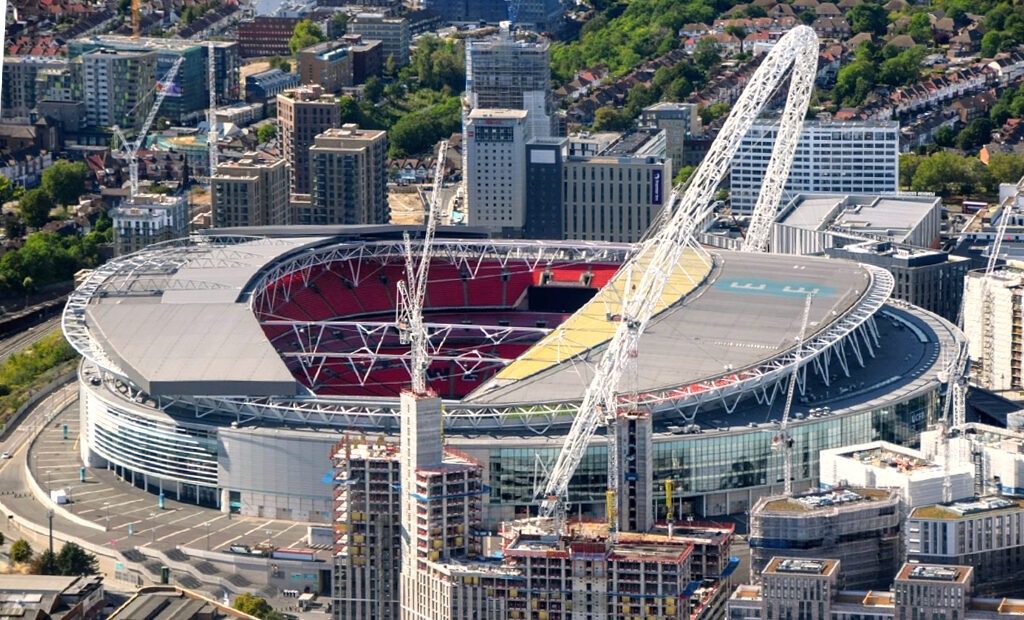What are the most beautiful football stadiums in the world?

Football is one of the most popular spectator sports because it provides high-quality entertainment to billions of fans all over the world, who can choose to watch a game either virtually, on television or other streaming devices, or physically, in a stadium. Though there are many stadiums all around the globe, some of them really stand out because of their exceptional design and beautiful aesthetic likewise giving a major reason to play in them for some players. This piece sheds light on some of the world’s most beautiful stadiums.
Maracana Stadium, Brazil
Maracana Stadium, located at the heart of Rio de Janeiro, holds a unique position in the world of football. Its legacy commenced with the 1950 FIFA World Cup, and it became renowned for accommodating an immense crowd of 200,000 spectators during that tournament’s conclusion. Contemporary safety protocols have reduced the seating capacity to approximately 78,000. Nevertheless, it remains an exhilarating hub of football enthusiasm. Maracana has been the venue for many thrilling events, such as Pele’s landmark 1,000th goal and the World Cup showdowns in 1950 and 2014. The famous circular architecture continues to mesmerise football lovers globally.
Camp Nou, Spain
Since 1957, Camp Nou has been a proud symbol of football history and is the dwelling of FC Barcelona. It is Europe’s most capacious footballing arena, with room for nearly 100,000 spectators. This stadium is an architectural wonder, merging modern design with a deep cultural legacy. For both football and architecture fans, a visit to Camp Nou is a must. Experiencing a match at Camp Nou, amid the enthusiastic cries and melodies of devoted supporters, is a matchless event. The FC Barcelona Museum within the stadium adds to the allure of this eminent venue.
Boca Juniors Stadium (La Bombonera), Argentina
Situated in Buenos Aires, La Bombonera, home to Boca Juniors, is renowned for its vibrant atmosphere and singular design. With one flat side and three vertical stands, it resembles a box of chocolates, earning the nickname “La Bombonera” or The Chocolate Box. Despite housing around 54,000 people, the intense vigour of the fans renders the stadium’s presence even grander. Numerous opposing teams have described the intimidating experience of playing within its energised, iconic surroundings.
Estadio Azteca, Mexico
Built in Mexico City in 1966, Estadio Azteca stands as a dynamic home for Mexican football. Notably, it is the only stadium globally to have hosted two FIFA World Cup finals – in 1970 and 1986. With a capacity for over 87,000 spectators, it’s the largest football venue in Mexico, and one of the most spacious in the world. Its design, considering the region’s seismic activity, is praised for its roominess and circular shape. Witnessing a match at the Azteca, especially at full capacity, becomes an unforgettable memory.
Old Trafford, United Kingdom
Referred to as the ‘Theatre of Dreams’, Old Trafford has been Manchester United’s sacred ground since opening in 1910. Famous worldwide, it accommodates over 74,000 spectators. The distinctive architectural layout, with slanted stands, enables supporters to be near to the on-field excitement. The echoing tales of victory and heritage within Old Trafford make it a destination for any passionate football fan. It represents not only a sports venue but also the rich history and triumphs of one of the globally admired football clubs.
San Siro, Italy
Also known as Stadio Giuseppe Meazza, San Siro is a monument to Italian football’s heritage. Nestled in Milan’s centre, it serves as a battleground for two giants of Italian football, AC Milan and Inter Milan. Constructed in 1926, the stadium underwent several revamps, boosting its seating capacity to a remarkable 75,923, securing its position as Italy’s largest stadium. Cylindrical pillars support the upper tiers, offering spectators an unobstructed view of the game. The passion during the Milan derby, enhanced by the vibrant cheers of dedicated fans, establishes an unparalleled and memorable atmosphere.
Al-Janoub Stadium, Qatar
Positioned in Al Wakrah, Qatar, Al-Janoub Stadium is celebrated for its striking design and architectural excellence. Specifically built for the 2022 FIFA World Cup, it epitomises the splendour of contemporary football arenas. Designed by the acclaimed Zaha Hadid Architects, the sweeping lines and innovative characteristics of the stadium render it an architectural wonder. With a seating capacity of roughly 40,000 spectators, Al-Janoub hosted several pivotal matches during the 2022 World Cup, including the opening match and the quarter-final stage. Its distinctive retractable roof and air-conditioning system ensured a pleasant experience for players and fans, even in Qatar’s intense heat.
These stadiums, architectural masterpieces in their own right, also occupy a cherished space in the hearts of football enthusiasts across the world. The mythical status is underscored by legendary matches that have occurred within their confines, leaving an everlasting imprint on the history of the beautiful game. Whether it’s Al-Janoub Stadium’s futuristic design or Camp Nou’s iconic magnificence, these stadiums continue to enchant and motivate football admirers around the globe.
The editorial unit
























Facebook
Twitter
Instagram
YouTube
RSS